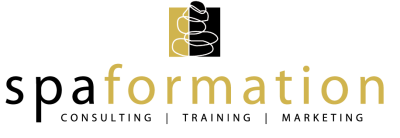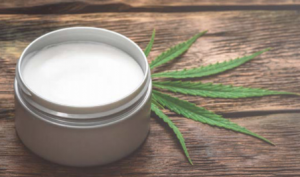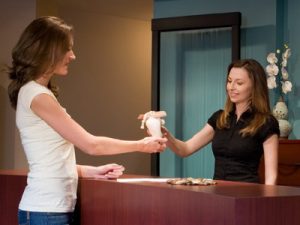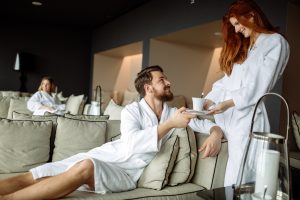In this day and age, who doesn’t check reviews before purchasing products and services? Reviews are a vital means to create or break the trust of your brand. And while we can’t always rely 100% on every review, we can place much more faith in the feedback that we specifically ask for from guests.
If you’ve never asked your guests for feedback, you really are working without all the facts that can help optimize your business. Too many times, thinking that things are going okay aren’t the same as your guest’s expectations. Avoid errors and dissatisfied guests by getting on the same page.
Asking for guest feedback, and implementing their insights helps to create a personal touch and loyalty. You can instantly produce guests who feel important and valued.
Ask in person; and remember to ask. And don’t just go with the usual, “Did you find everything you were looking for?” store question. Be specific and ask something that they might actually be honest about; “Do you think we offer enough variety of this service?” Record the casual remarks, and over time, you’ll have something credible. The single most common occurrence in Sales, is forgetting or neglecting to ask for feedback. When you have a particularly happy guest, send them a link to your google reviews and ask if they will rate your service.
Decide what type of Feedback you want.
Feedback can be used to acquire all kinds of data. For example:
- Guest Satisfaction; in terms of products or services.
- Pricing; to understand how your guests feel about payment plans.
- Guest Service; to see how well your reception handles inquires and administrative tasks.
- Competitors; hear what your guests are saying about them. Since the buying decision of any product or service is an emotional decision, it pays to acknowledge users / potential users feelings in relation to what you offer vs. the competition.
- Advertising feedback; how did you hear about us?
Obtaining feedback traditionally with forms:
- Offer a Reward.It doesn’t take much to incentivize people to provide feedback. A chance to win a gift card, some Tim Hortons, even a deep discount at a popular retailer will boost your response rates.
- Offer Anonymity. Isn’t it true that we all say things anonymously that we would never say if our names had to be attached to it? In guest feedback, accountability is on the brand, not the guest so you can let them be anonymous.
- Call for details. If you’re not doing this already, give it a try. Call guests up randomly, check in, and ask specific questions about their experience. Again, don’t wait until they’re no longer a guest.
Looking at modern ways to obtain feedback.
- Add feedback surveys into your WiFi Network. Cafes, bars, hotels and even stores are now choosing to provide free wifi to attract more guests to their Spas. While this is great for the guests, it also presents valuable opportunities to gain feedback from them. You can require guests to create a free account to access the wifi, and ask how their experience is while they’re online. Exploiting free guest WiFi to ask for feedback can be a fair value trade for both business and guest. It can also help you keep your information database up to speed by collecting their email.
- Initiate SMS surveys. Not to be underestimated, SMS is one of the most powerful channels to request feedback from guests. In an age when consumers are always a few feet away from their phones, SMS is still a great way to communicate with your guests. With higher open rates than email, they’re a strong alternative to use when only a phone number is known.
- Send out surveys.A common, effective tactic. Sometimes people just need to be asked. Try sending out regular, shorter surveys that are focused on specific areas. Using MailChimp is economical, and it is easy to have professional looking surveys that record answers.
Some operational software also can send out two kinds of surveys:
Quality Assurance Survey – this is an email or SMS to be sure they had a positive experience the same day as they came to your business. It gives you a chance to be timely and efficient responding to any problems and learn more about the ongoing satisfaction of your guests.
General learning survey – when you are looking to grow or change why not ask the people who pay you now what they think? Many of your loyal fans would love to have a chance in giving you specific and valuable advice and what you should add or change. It may not be something you use but it gives them a voice, which most guests love.
- Monitor social media and the Web. When was the last time you Googled your own business to see what people are saying about you? Odds are people are already talking about your brand.
Obtaining feedback is only one part of the equation. Feedback provides no benefit if it is left to sit on someone’s computer, or in someone’s desk. To reap the profits from feedback you need to respond, organize, share, and analyse it.
Respond
With a variety of ways to collect feedback you need a clear, obvious and timely strategy to respond to your guests.
Have something created in writing so your whole team knows how to respond. It may be obvious to you, but timeliness is critical. It can mean the difference between saving a guest’s business or them becoming a social media assassin attacking your business.
Remember that you do not want just to reply to the bad stuff, reply to the good stuff too. It makes those who give you feedback valued and heard!
Here are your key strategies:
- WHEN: What is the correct response time for each piece of feedback. It will depend on where it came from and what it said.
- WHO: Name the people in your business who own this job, and that might be YOU! Create accountability in your spa for understanding the importance of handling this task.
- HOW: What’s the appropriate way to respond?
- In person?
- On the phone?
- Email?
- Social Media?
- WHAT: This can be tricky because it may depend on specifics of a circumstance. But remember the number one response a guest wants is acknowledgment of an issue, not a free service or product.
Let’s discuss some possibilities:
GOOD STUFF: With positive feedback clearly you just want to recognize that someone said something nice. If it was an email, create a template that says, “Thanks for saying something nice!”.
NEUTRAL STUFF: If the comment was neutral, like a suggestion for something near and a small thing that will not affect a future visit. Once again communicate back to them that you appreciate the feedback and will consider the change of improvement as your business progresses. Keep it simple and professional.
KINDA BAD STUFF: Here is where it’s tricky because it may depend on how you feel that day or what is else going on. Rule of thumb is don’t judge it. Take it at face value and imagine how you feel when you make a complaint and how you feel is the best way to handle it. Too many owners are looking to avoid, or get out cheap, when responding to a complaint. If you think about what it costs to get a new guest, vs. keep an existing one, it should give you a good clue. It’s ok to compensate a guest for a bad experience. It doesn’t matter who’s right or wrong. DO NOT take this personally. This is a business decision to keep a guest in your business, or at the least, not have them share with all their friends and family how awful you were to deal with when they complained. The world is too small a place to take that risk. Ask yourself, and offer them, “what can I do to make this right?” and get it done.
REALLY BAD STUFF: Consider it like a fire in your business. Don’t panic but move quick and respond with something to put the fire out. In real terms this should not be happening very often. Although when it does it usually sends leaders spinning and upset. We recommend taking a very personal, hands on, and fast approach. It’s the right thing to do and acknowledge when something goes wrong. We are humans and it will go wrong sometimes. Just communicate with your guest in an authentic and genuine what that let’s them know you care and are stretching to make it right.
Organize
With a variety of ways to organize feedback, you can start by creating a spreadsheet and logging specific answers under columns. Using a rating system is helpful, graphs and charts allow you to see your data easily.
Share
Share that feedback with your team. Once you’ve collected a pile of good reviews, hang them up in the lunchroom.
Send out a memo or email acknowledging the positive work of specific team members. That is good Internal marketing and improves staff retention and sets the bar higher for all team members.
Provide incentives or rewards for team members who uphold or exceed guest service standards.
Sharing both good, and bad reviews, is an important tool to keep your team informed and engaged. The need to celebrate wins but also learn when things go wrong. It is always better that information comes directly from guest feedback rather than just a leader or owner. This way the leaders can help coach the team members on how to improve their level of service without the team member thinking the leader is just “making it up”.
Analyze
If negative reviews indicate a widespread problem or are specific to one functional area, you can use this knowledge to determine what type of training needs to take place to correct the problem.
Your team can incorporate proven tips into your training materials to steer team members away rom damaging behaviors.
When you uncover recurring issues, fix them. Then look for an opportunity to make the process, situation or product even better.
Implement your Plan
- Hear the Problem – Leaders recognized the problem
- Standardize the Behaviors Your Guests Appreciate Most
- Eliminate future problems and turn your service into an asset, not a liability
- Involve everyone. Even if you can’t increase your budget to upgrade a feature, you can educate team members on the issue and featuresso they can use the increased knowledge to improve your guest’s experience.
By Robert Cass
CEO
Spaformation Inc.











